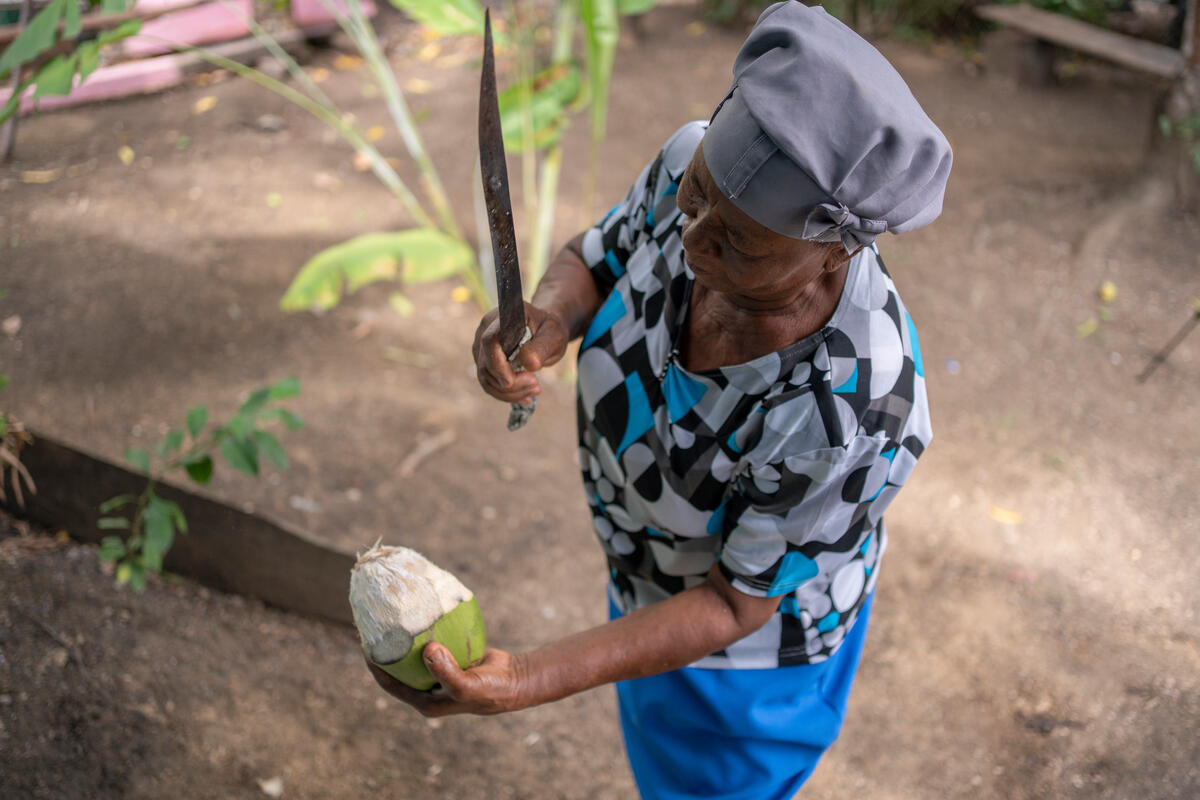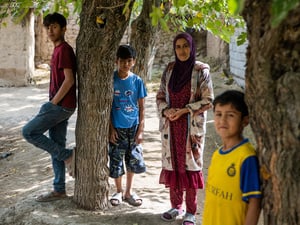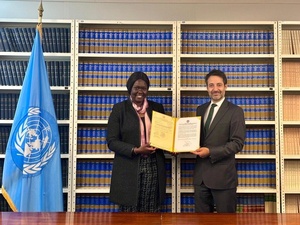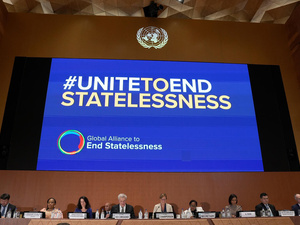From the limbo of statelessness to belonging in Panama
From the limbo of statelessness to belonging in Panama

Hermelinda stands in the doorway of her home in Santa Fe, in Panama's Darien Province.
She might have spent the rest of her life feeling this way if a chance encounter had not set in motion the process that led Panama, the country she has considered home for the past 52 years, to recognize her as a stateless person.
UNHCR, the UN Refugee Agency, estimates that at least 4.4 million people are stateless, meaning that no country recognizes them as nationals. However, the actual figure is believed to be much higher due to a lack of accurate data and the difficulties of counting people who have no legal identity. Many others risk becoming stateless because they face challenges proving their links to a State.
Papers misplaced
Originally from Colombia, Hermelinda remembers few details about Belen de Docampado, the small town where she was born. She knows it was far from any city, with riverbanks on one side and mountains on the horizon. Her parents were farmers who never learned to read or write, although her mother could sign her name. In Belén de Docampado, births were registered occasionally, in battered notebooks that were often misplaced.
“When one went to claim those papers, they no longer existed. And that's what happened to [me and] my brothers and sisters,” she says. Of her four siblings, only her youngest sister, Enis, managed to track down her birth registration.
When Hermelinda was 20, she fell in love and got married. Decades before the movement of refugees and migrants through the Darien jungle that separates Colombia and Panama made international headlines, Hermelinda, her husband, and their baby girl took a boat from Belen to La Palma in Darién in search of better opportunities for their family, eventually settling in Santa Fe.
It was in Panama that Hermelinda first realized she lacked the documents she needed to start her life in a new country. She took the boat back to Belen and, to her dismay, found no proof of her existence: no birth certificate, no baptism document or national ID.
Back in Santa Fe, the days turned into months, the months into years, and the years became decades. In between those decades, life happened. She had her son - Edín - who was born with heart issues and mental disabilities. She went on to have two other children, who did not survive.

Hermelinda sits with her son, Edín, on the porch of their home in Santa Fe. He has heart problems and intellectual disabilities and requires constant care.
Years later, when her husband had died, and her daughter had grown up and left for Colombia, Hermelinda turned to the fields behind her home to earn a living, growing corn, rice, plantain, and cassava. Other possibilities for earning a living seemed out of reach without an ID, as did seeking medical care or social services.
Because he was born in Panama, Edín qualified for Panamanian nationality, which meant he could access medical care and certain benefits as a person with disabilities. However, he still depended entirely on Hermelinda, who had to accompany him on frequent trips to the city for medical appointments. Every such trip came with the fear that she could be detained at a police checkpoint because she lacked documents.
A life-changing encounter
Although Panama became a signatory of the 1954 United Nations Convention Relating to the Status of Stateless Persons in 2011, the procedure for recognizing a stateless person was not established by law until 2019. Since then, the country has made significant advances in identifying people at risk of statelessness and protecting the basic rights of stateless individuals, including their access to education, health, and the right to work.
- See also: Five things to know about statelessness
According to the last census, over 28,700 people in Panama are at risk of statelessness. Most of them were born in Panama and are members of indigenous communities that lack birth certificates. The rest, close to a thousand individuals, were – like Hermelinda – born outside of Panama and do not have a birth record or proof of citizenship.
In 2021, on what Hermelinda thought would be a regular day, her life changed. A joint UNHCR and government mission to ensure refugees in the Darien province had access to proper documentation made its way along Santa Fe’s dirt roads. After decades of being too afraid to share her situation with local authorities, Hermelinda found the courage to seek help. UNHCR recognized her as a person at risk of statelessness and referred her case to the Ministry of Foreign Affairs.
Just knowing that competent authorities had taken her case gave Hermelinda hope. “One feels different, like another person. I would like someone in that situation [without documentation] to seek help. And if I encounter someone else in the same situation as I was, I'd guide them,” she says.
In January of 2024, Panama officially recognized her as a stateless person. She received an ID, and now, for the first time in 72 years, she holds undeniable proof of her existence. “When I had that ID card in my hands, it was such great joy in my heart. From that moment until now, I feel like I’ve come back to life,” she explains. “If I must go somewhere, I go without fear because I have an ID.”
Life goes on in Santa Fe, much as it did before. Hermelinda works the fields with her machete. She sows and harvests, turning the corn into corn cakes and earning a living for herself and Edín, who is now 47 and has his mother's smile. But the peace Hermelinda feels is new and exciting.
“If I were young, I would have many plans. The good thing is that I’ve achieved this,” she says, smiling and holding up her ID.
Viola Eleonora Bruttomesso contributed to this story.








